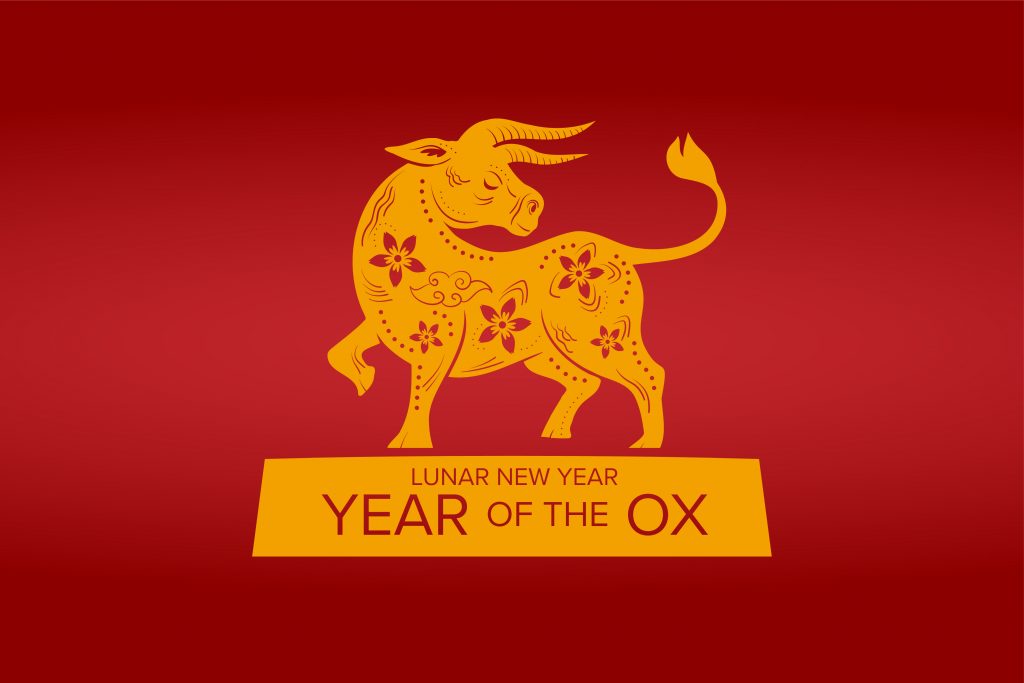While many rang in a new year over a month ago on January 1, millions around the world are celebrating Lunar New Year, also called Chinese New Year, today and beginning the Spring Festival. The 4,000-year-old holiday marks the first new moon of the lunisolar calendar traditional in many east Asian countries and is one of their most important holidays. Lunar New Year also marks the transition in the Chinese zodiac from 2020’s Year of the Rat to the Year of the Ox.
Chinese New Year and the two weeks of Spring Festival are typically filled with reunions, parades, gift giving, fireworks, and other traditions, culminating in the Lantern Festival. Like all recent holidays, the traditions and celebrations look different this year, but many Tyson Foods team members are staying connected to the season and family through the ritual of food. Read on as some of them in Thailand, China, and the United States share recipes and traditions of Lunar New Year.
Sago in Red Sweet Water
From Soipetch Archasripetch (Petch), Internal Communications and Culture Manager, Tyson Poultry Thailand
Chinese New Year for Thai Chinese people in Thailand has been the most important festival of the year since ancient times and has cultural similarities to the Songkran Festival (the Thai New Year’s holiday). It is not only time for family reunions but bidding farewell to the old days. It is also marked by the ritual of ancestor worship. Perhaps this is because the Thai Chinese people feel more distant from their ancestral home.
Even though there are no public holidays for the Chinese New Year in Thailand, most Chinese companies, organizations and schools will hold a celebration. Celebrating the Chinese New Year with company activities in the morning gives me an opportunity to make a wish to my ancestors to protect my family and grant us prosperity and success in our career. Tyson Foods pays attention to the Chinese New Year, and I am glad to be a part of this important event every year.
At home, I pay respects to the gods with my family. We have this ceremony twice: at early morning and midnight. The early morning prayer is held for the ancestors and the spirits. The midnight prayer is held for the gods to ask for luck, health and wealth.
For the Chinese New Year in Thai culture, we prepare many dishes to represent different offerings. For example, there is a dish of four desserts made from egg yolks: Tong Yip, Tong Yod, Med Kanoon and Foy Tong. They represent wealth, gold, and longevity. It’s believed the recipient will always have enough gold and money to live on throughout their long journey.
When I celebrate the Chinese New Year with family, my mother cooks a Thai dessert called “Sago in Red Sweet Water.” It is very easy to cook in a short time and is symbolic of bringing family together with love and harmony, like the roundness of sago seeds.
Petch’s Sago in Red Sweet Water Recipe
Ingredients:
- Sago (tapioca pearls)
- Hale’s Blue Boy Sala syrup
- Sugar
Directions:
1) Bring water to a boil in a medium saucepan.
2) Once water is boiling, add sago, stirring occasionally to keep sago from sticking.
3) Cook for 5-10 minutes or until sago begins to turn translucent at the edges.
4) Add syrup and sugar to desired sweetness. I add a ladleful.
5) Continue cooking until whitish center fades.
6) Serve in a bowl with the red water.
Eight-Treasure Pudding
From Liu Jing, Senior R&D Creative Chef, TCN Innovation Lab – Shanghai
We have many different dishes for celebrating Lunar New Year, so I decided to pick one popular in the whole country. It is a kind of sticky rice pudding called “Ba Bao Fan.” Ba Bao means “eight treasures,” with the treasures being a variety of fruits, nuts, and seeds. To celebrate the Lunar New Year, we eat it with family members after finishing the big meal on Lunar New Year’s Eve or as breakfast on the first day of the new year.
Traditionally these “eight treasures” are mixed with sticky rice and lard and steamed, with a layer of sweet red bean paste in the middle. The “Ba Bao” I used are lotus seeds, longan, kumquat, jujube, honey cherry, honey wax gourd, melon seeds, and red palm. The combination symbolizes harmony in marriage, reunion of family, luck, and health in life.
I also made a little adjustment this year by changing the white sticky rice into black sticky rice to add more flavor. Additionally, I replaced the sweet red bean paste with salted egg yolk to reduce sweetness.
“Ba Bao Fan” is the sweetest memory of my childhood. No matter how full I was after finishing the big meal, I was always looking forward to this dessert.
Chef Liu Jing’s Ba Bao Fan Recipe:
Ingredients:
- Black Sticky Rice
- Egg Yolk Sauce (ready-made from store or by recipe below)
- Eight Treasures – chopped and cored as needed, a spoonful of each (can be adjusted to taste and pudding size):
- Lotus seeds
- Honey Cherries
- Longan
- Honey Wax Gourd
- Kumquat
- Jujube
- Melon seeds
- Red palm
For Egg Yolk Sauce:
1) Bake 3 duck egg yolks until just cooked.
2) Smash the yolks with spoon.
3) While mixing yolks, add oil and sugar a little at a time, until it looks like jam.
For Ba Bao Fan:
1) Press portion of cooked black sticky rice into bottom of bowl or mold you will use for steaming. Could be one large mold or smaller for individual servings. I used a small stainless bowl for an individual serving.
2) Put the salted egg yolk sauce on the layer black sticky rice.
3) Spread remaining sticky rice over egg yolk layer and press to compact.
4) Steam for 10 minutes
5) Turn out on plate and add more “Ba Bao” on the top of the pudding. Serve.
Pork Dumplings
From Dr. Jianlin Si, Director of Sales, International Sales, Corporate HQ
In China, dumplings are a must have on the New Year’s Eve dining table for every household and represent family reunion. When a family is making dumplings, every family member will participate and share stories with each other. It is not just a process of making food, but also a time of sharing and celebrating. With the new Year of the Ox coming, I would wish my family, friends, customers, and coworkers around the world a healthy, happy and wealthy New Year!
Dr. Si’s Pork Dumpling Recipe:
The key to great dumplings is to stir these ingredients in the same direction – either clockwise or counterclockwise – throughout the entire process. This will get your ingredients mixed evenly and make sure every dumpling has the same flavor.
For filling:
- 1.5 lb Tyson fresh ground pork
- 1 lb peeled shrimp
- Handful of mushrooms
- Half can of chicken broth
- 1 teaspoon of soy sauce
- 1 Napa cabbage
- 2-3 pieces green onion
1) Finely dice shrimp, cabbage, mushrooms and green onion and place in different containers.
2) In a large mixing bowl, add ground pork, chicken broth, soy sauce and about 2 tsp salt, then stir with chopsticks to mix thoroughly. This will make sure the flavors are evenly dispersed.
3) Next, add diced shrimp, cabbage, mushroom, and green onion to the meat one at a time while continuously mixing. Your arm will feel sored after a while. Take a break as needed!
4) There are two ways to get the dumpling dough wrap: buy wrap from the grocery store or make it yourself. Making wraps at home are just like making bread; you pour water into flour and make a dough (2 cups flour and ½ cup water). Let it sit for a while until the surface of dough become quite smooth. At this point, you can cut the dough into a small, round pieces and roll the dough to thin round wraps.
5) Now that you have the filling and wrap ready, scoop the filling into a wrap and close it by pinching sides together. Put dumplings into boiling water and wait. Dumplings will float to the surface when done. Enjoy.





